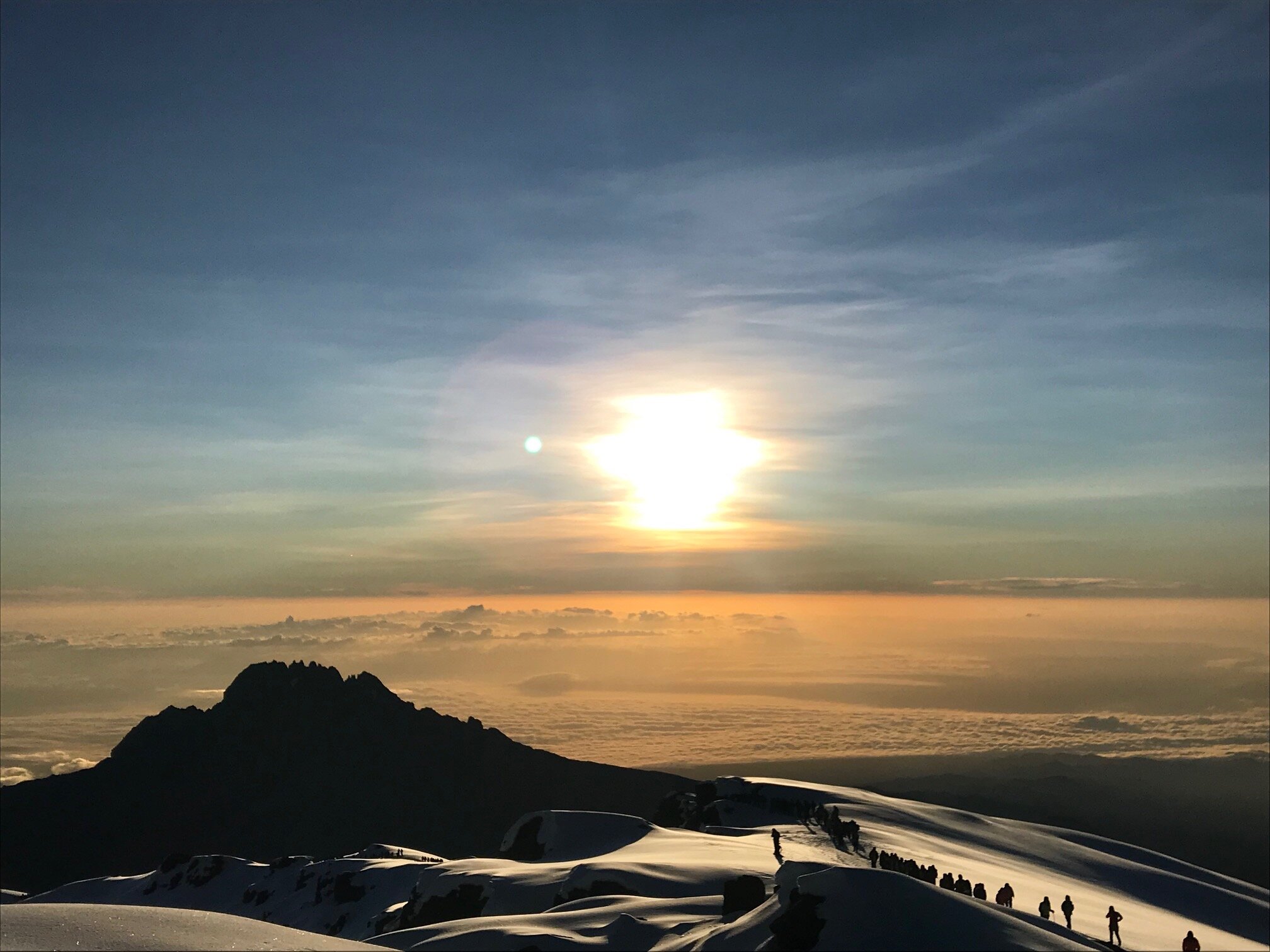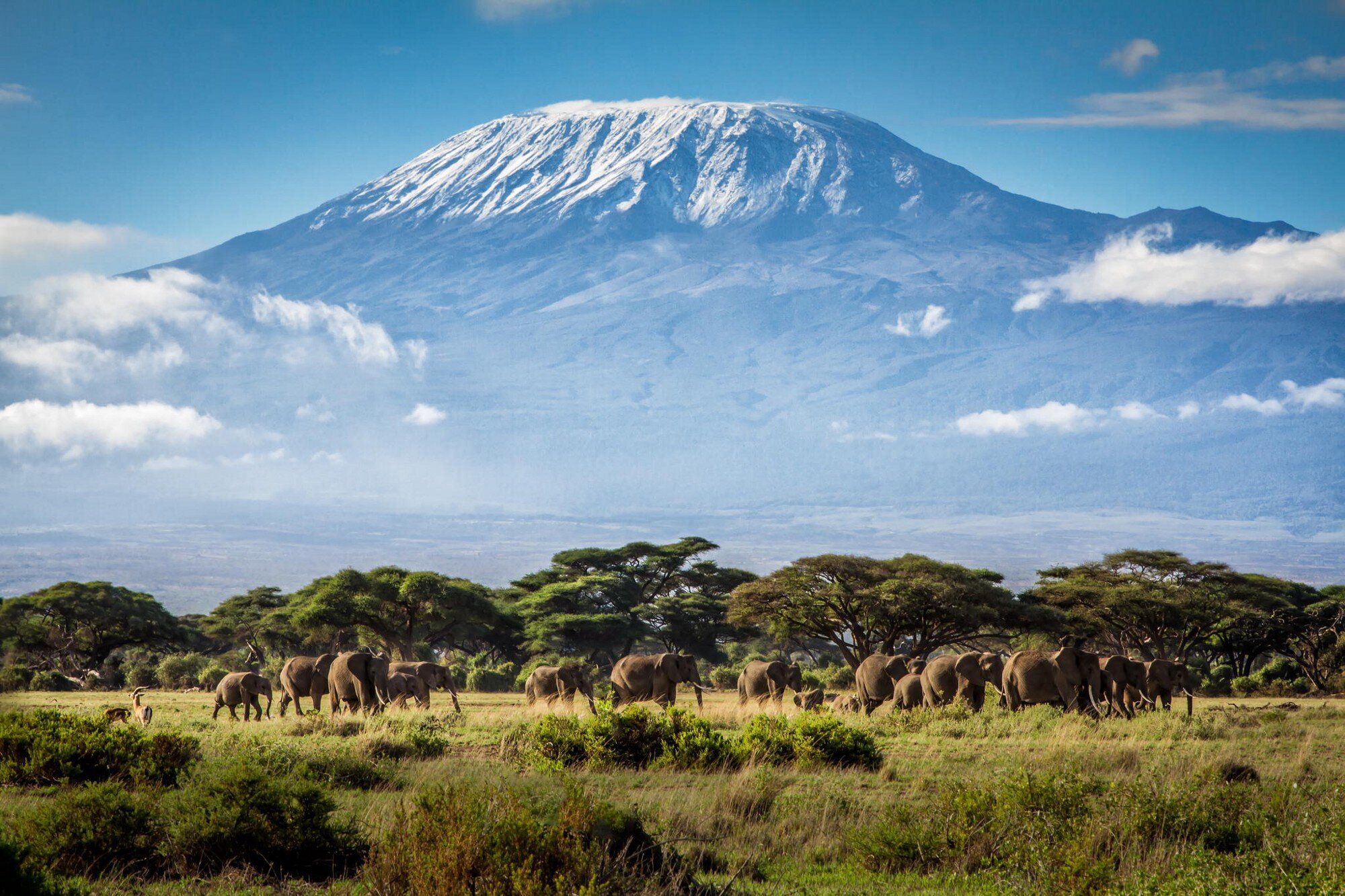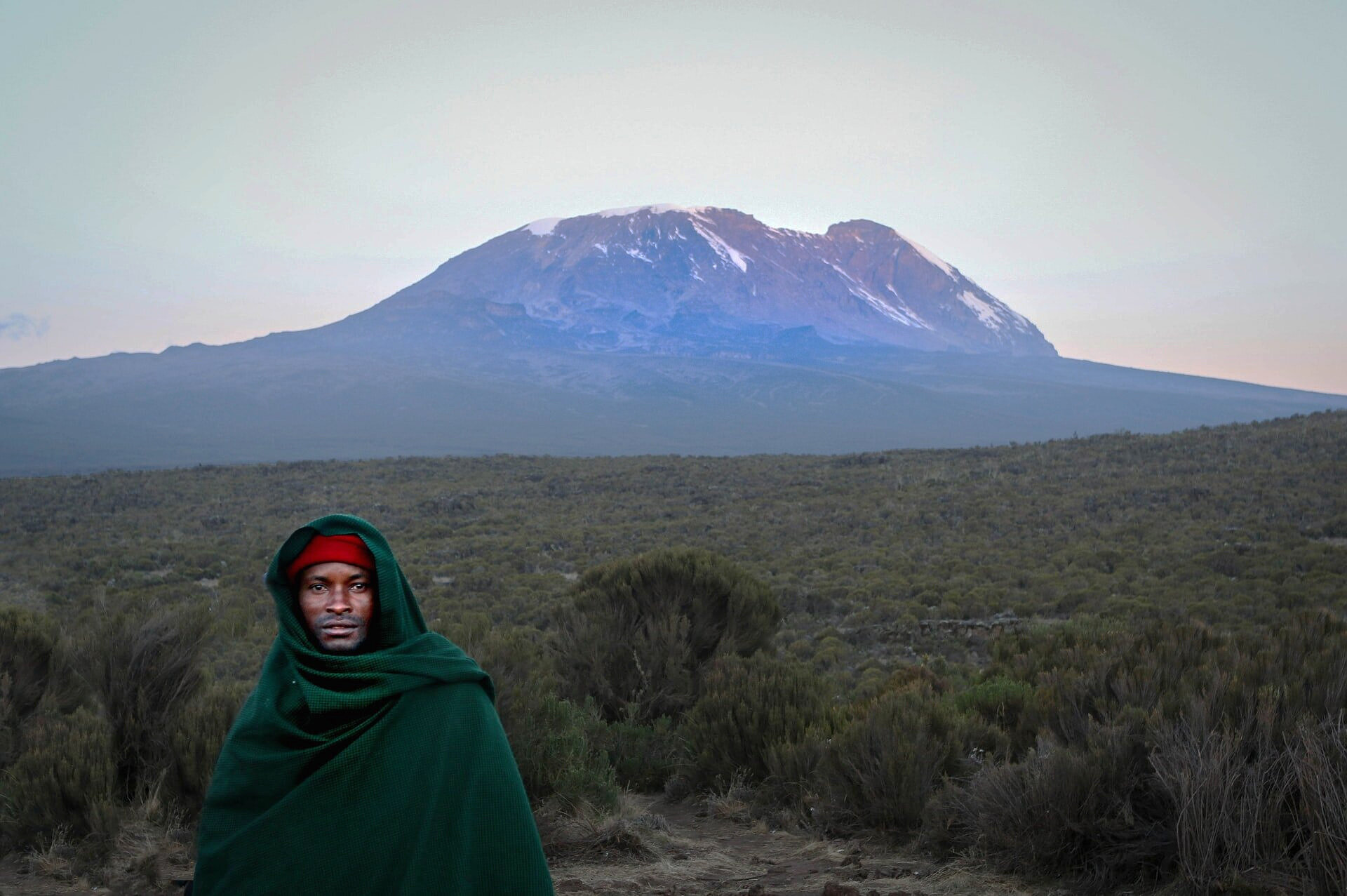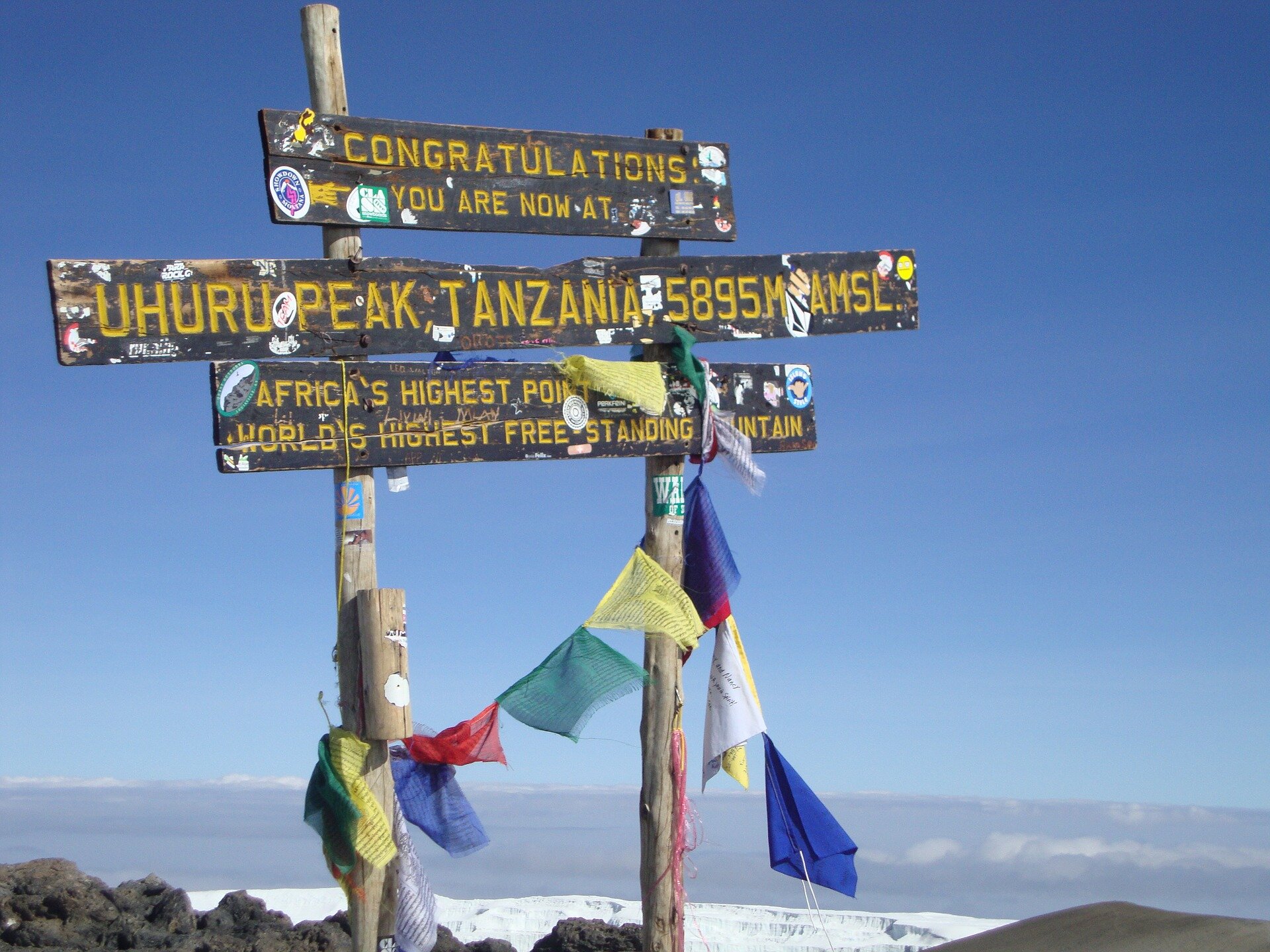10 reasons why Climbing Kilimanjaro should be on your Bucket List
Located in Northern Tanzania, near the border with Kenya, Mt Kilimanjaro stands at 5,895 meters (19,340 feet) above sea level. This famous African snow-capped peak looming over the plains of the savannah has become a major destination for mountaineers and trekkers from around the world. Here’s why climbing Kilimanjaro should be on your bucket list, too:
1. A Mountain of Superlatives
Mount Kilimanjaro is an inactive stratovolcano known as the world’s tallest free-standing mountain and Africa’s highest peak, making it one of the Seven Summits. There are only seven trails up to the summit, and no roads. As a result, despite relatively heavy foot traffic, the mountain has retained its wild nature and offers awe-inspiring scenery.
From the black-and-white Colobus monkeys swinging through the rainforest canopy to the giant, alien-looking groundsel plants in the moorland, Kilimanjaro is teeming with amazing flora, fauna, and scenery. Much of it can be found nowhere else on earth! With three volcanic cones namely Mawenzi, Shira and Kibo, the wonder of Kilimanjaro never palls. The thrill that comes with standing atop this mountain is often more than enough reason for anyone to venture this path.
2. Just about anyone can reach the top
Since Mt Kilimanjaro is the easiest mountain to climb of the Seven Summits, it has become popularly known as “Everyman’s Everest”. Although you have to be in decent shape, you hardly need any previous hiking or mountaineering experience, ropes, or technical equipment to get to the highest peak in Africa. The youngest person to reach the summit was six years old, and the eldest (as of 2011), was 83. Even though thrill and challenges await trekkers every breathing moment, it is considered beginner-friendly, with intermediate as well as difficult treks:
Marangu (5-6 days; Difficulty level: Low) – “The only one with hut accommodations”
Machame (6-8 days; Difficulty level: Medium) – “The most popular”
Lemosho (7-8 days; Difficulty level: Medium) – “The most scenic”
Shira (7-8 days; Difficulty level: Medium) – “The one with the highest starting point”
Rongai (6-7 days; Difficulty level: Low) – “The easiest”
Northern Circuit (9-10 days; Difficulty level: High) – “The newest and longest”
Umbwe (5-6 days; Difficulty level: High) – “The shortest, steepest, hardest”
3. One of the World’s Greatest Natural Wonders
Mt Kilimanjaro is one of the world’s greatest natural wonders: a snow-covered mountain located just south of the equator, an ocean of green forest surrounded by dry savannah. It is rich in flora and fauna and boasts breathtaking landscapes. The mountain can be divided into 5 climate zones, each with its own vegetation and animal life. The lower reaches of Africa’s highest peak are dominated by evergreen bushlands and tropical rainforests. At approximately 3000 meters, its landscapes start to change into a shrubland setting (heather and moorland zone), and at around 4000 meters, the surroundings become very arid and rocky (highland desert zone), similar to a lunar landscape. Above that, the mountain turns into an alpine desert while the top of the mountain is arctic (partially snow-capped with glaciers interspersed between the volcanic crater). The experience of climbing Kilimanjaro is like walking from the equator to the arctic pole in only a few days, providing dramatic changes in flora and fauna day by day.
Due to its high altitudes Mt Kilimanjaro has created a habitat for unique plants and flowers that can rarely be seen anywhere else. And although there is not much wildlife on the mountain itself, wild buffaloes, elephants, and leopards can sometimes be spotted while traversing through the forests and bushland at its base. And for the ultimate wildlife experience, you can easily go on a proper safari a mere two hours from the base of the mountain! What better experience to reward yourself with after having summited Africa’s tallest mountain!
4. Remote but Very Accessible
Kilimanjaro is located in the remote wilderness of Tanzania, just south of the equator, next to the Serengeti. But despite its remote location, there are several non-stop flights from Europe and other continents servicing Kilimanjaro airport every day. Around the mountain there is superb infrastructure — reliable ground transportation, decent accommodations, outfitters, and gear to rent for your trek. Along the main route on the mountain are sleeping huts, on other routes there are porters who carry and set up tents and kitchen facilities for you.
5. Your visit supports the local economy
The large number of tourists traveling to Tanzania for both safaris and Kilimanjaro mountain treks contributes majorly to the local economy. Thousands of jobs are created for local porters and guides, cooks, hotel staff, food producers, merchants, travel and trekking agencies, thereby boosting the local economy.
6. Spectacular photo opportunities
Mt Kilimanjaro is one of the most beautiful spots on earth. It is indeed an achievement to stand atop the rooftop in Africa, and mountaineers are able to take spectacular photographs to remind themselves of one of the most rewarding adventures available on the planet.
7. Personal accomplishment
People climb Mt Kilimanjaro for a variety of reasons, but many are looking to mark a personal accomplishment or an important transition such as a graduation, retirement, marriage or divorce. And every year, you can read countless articles in newspapers, blogs, and websites acknowledging the very act of bravery and personal accomplishment of someone making the journey to the highest peak in Africa.
8. Raise money for a worthy cause
Long established trekking agencies are able to organize treks for charity, and most sponsors tend to be more generous with their funds when someone takes on the challenge of climbing Kilimanjaro to draw attention to a worthy cause. So when you conquer Kili you can make a positive impact on someone else’s life at the same time. Individuals with disabilities have also climbed Mt Kilimanjaro to demonstrate that that with courage and perseverance disability need not be a limitation.
9. A place for transformation
When you stand atop the roof of Africa, the view is indescribable. It inspires transformation and you see the world from a different perspective. Problems that seemed insurmountable before now pale in comparison to conquering Mt Kilimanjaro. The highest peak in Africa is a truly mind-boggling place to start a new beginning and is a place for vision and inspiration.
10. Kilimanjaro is a Symbol of Freedom
Mt Kilimanjaro inspired an entire continent to embrace freedom. The highest peak in Africa belongs to Tanzania which is the first nation in Africa to gain its independence from colonial powers. Before gaining independence from the United Kingdom as a Commonwealth realm in 1964, the country was known as Tanganyika. After signing the Articles of Union in 1964, it officially joined with the People’s Republic of Zanzibar and Pemba to form the United Republic of Tanganyika and Zanzibar, and within a year, it changed its name to the United Republic of Tanzania. The soon-to-be President, Julius Nyerere was quoted saying: “We, the people of Tanganyika, would like to light a candle and put it atop Mount Kilimanjaro which would shine beyond our borders and give hope where there was despair, love where there was hate, and dignity where before there was only humiliation.” Today, the summit is called Uhuru Peak, the Swahili word for “Freedom.”
Conquer Kilimanjaro with Sababu Safaris today!
Climbing Mt Kilimanjaro is an epic experience and the thrill of hiking up Africa’s highest peak is enough reason for it to be on your bucket list. Sababu Safaris will work with you to make this a reality. Get in touch with us today to get started.











